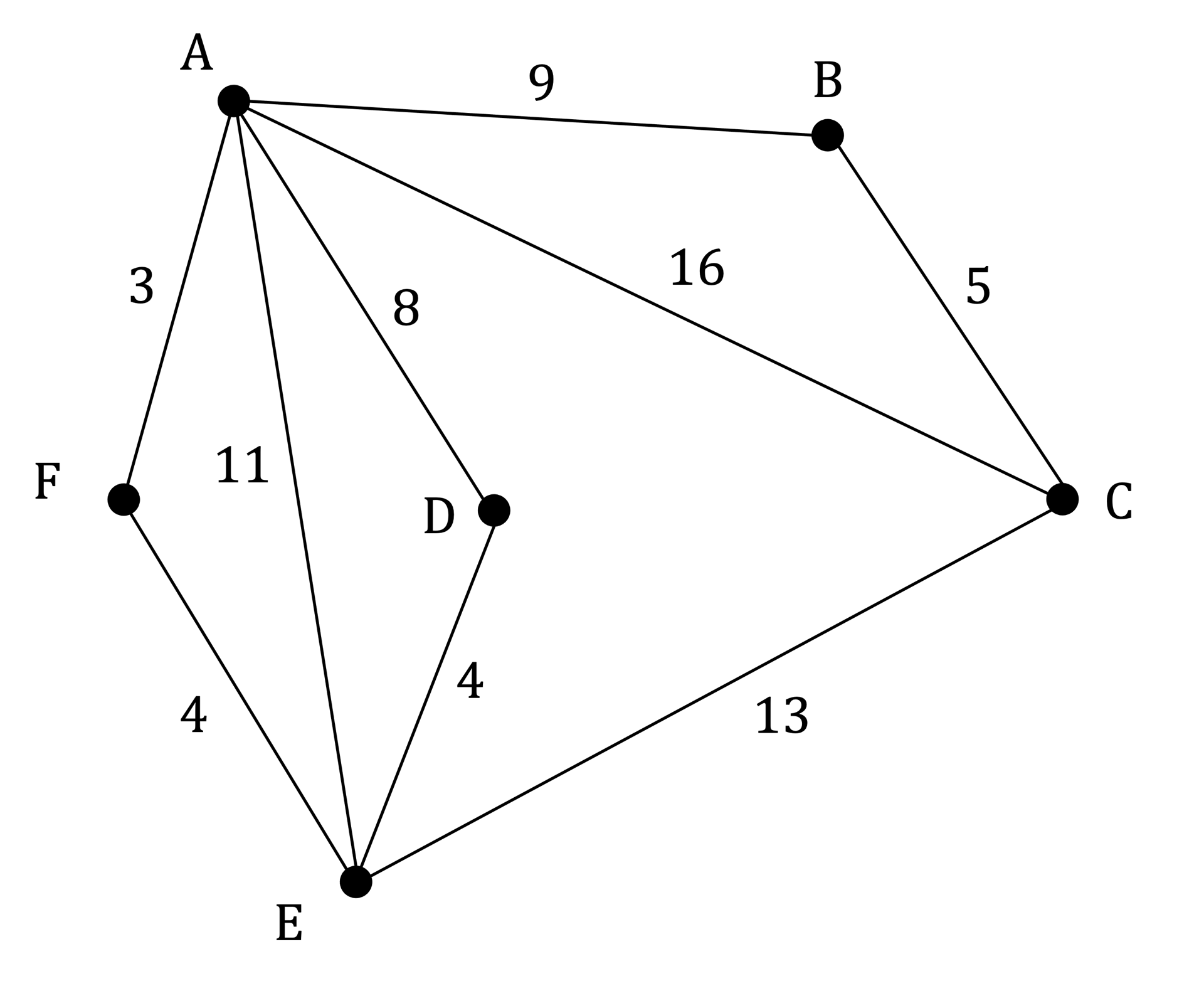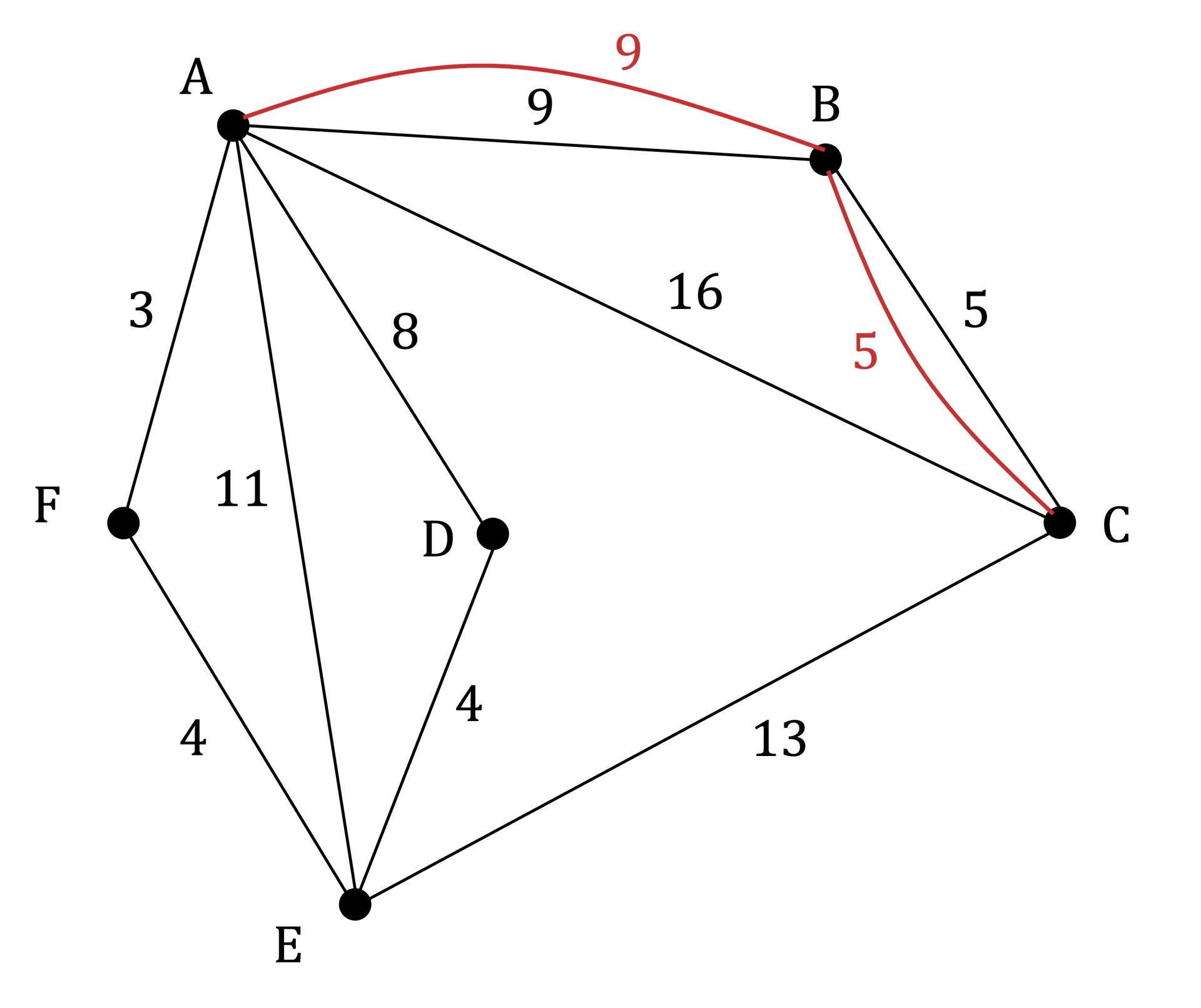The network shown below displays the distance, in metres, of the cables in a network between different connection points A, B, C, D, E and F.
Each length of cable must be inspected.

a)
Find the shortest route that allows all the cables to be inspected, and that starts and finishes at connection point E.
- STEP 1
Inspect the order of the nodes
A: 5 (odd)
B: 2 (even)
C: 3 (odd)
D: 2 (even)
E: 4 (even)
F: 2 (even)
- STEP 2
There is exactly one pair of odd vertices, A and C
The shortest path between A and C is ABC so the edges AB and BC need to be repeated
An Eulerian circuit, starting and ending at connection point E, is now possible

- STEP 3
Find an Eulerian circuit, starting and ending at connection point E
Shortest route: EFAEDABACBCE
b)
State the total length of the shortest route.
Add together the lengths of the edges in the original graph
3 + 4 + 4 + 5 + 8 + 9 + 11 + 13 + 16 = 73
Add the result to the lengths of the repeated edges
73 + 5 + 9 = 87
Shortest route = 87 m



